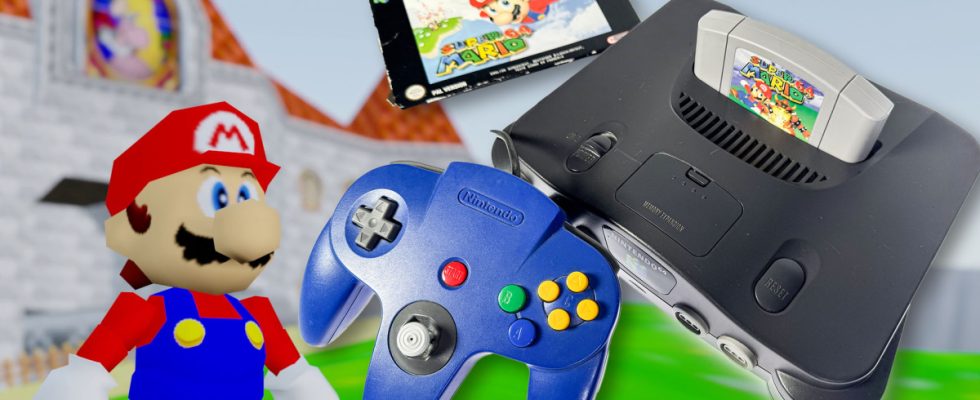In the 90s, a little plumber with a knobby nose, mustache and red hat became a symbol of the Japanese Nintendo company. Super Mario had already introduced the 2D platformer to the masses. With the release of the company’s first 3D console, he shouldn’t leave it at that.
In 1996, Nintendo released its first game console optimized for 3D graphics – the Nintendo 64. With it came Super Mario 64, which was one of only two launch titles alongside Pilotwings 64. That didn’t stand in the way of the console’s success.
Super Mario 64 became a mega success for Nintendo with a total of almost 12 million cassettes sold and is still a genre-defining game 25 years later. It is so timeless that it still has a lively community of fans and speedrunners who go in search of the 120 stars every time.
Video: Super Mario 64 – Golem retro_
[6:23]
The success was deserved because with Super Mario 64, Nintendo brought a completely new way of playing to the masses. While we previously jumped and ran through a level in a maximum of eight directions, in Super Mario 64 we had finer control. This was made possible by the analog stick of the N64 controller – a technology that has practically not been used since the days of arcade games.
Pioneer of the analog stick
Back in 1996, Mario was able to move in all possible directions using the analog stick and explore colorful and imaginative 3D worlds. They are full of secrets, puzzles and characters known from past Mario games.
Whether we were climbing a steep hill and dodging metal balls in Bob-Omb’s Bomb Mountain, chasing fish and shells in Pirate Bay Panic, or putting our jumping skills to the test in Rainbow Frenzy: Mario 64 was packed with exciting challenges and sometimes very difficult passages.
One of the biggest challenges: getting to grips with the then completely new and very precise control of our character and not losing track of things. The team, led by Mario creator Shigeru Miyamoto, did their best to make the camera angles on Mario as clear as possible. This didn’t always work perfectly, especially since no other jump ‘n’ run up to that point, not even the recently released 3D game Crash Bandicoot, offered so much freedom of movement.
At first, most people had a hard time with it. It was just unusual to have Mario run and jump in 360 degrees and all directions. This new freedom alone also caused fascination among young and now older fans of the Mario games.
In addition, Nintendo gave the little plumber super-class acrobatic powers. Using various key combinations, Mario was able to kick, punch and slide across the floor for the first time. Particularly difficult maneuvers such as the triple jump, the long jump and the wall jump became necessary for survival, especially in later levels.
The return of the piranha plant
As with previous Super Mario titles, the first levels in particular were intended to serve as a training ground for our character. In world one we learned stomp attacks and basic moves. Later levels introduced increasingly complex elements such as flying passages, nasty bullies, rising lava and invincible electric snakes.
Nintendo translated various villains and obstacles known from the 2D games into their three-dimensional counterparts. And some of them are even nastier: Who doesn’t remember the angry Chain-Chomp, the Thwomps with back problems or the sleeping piranha plants? The soundtrack might be even more iconic. For the first time, Mario also got a voice: “Mamma mia!”

